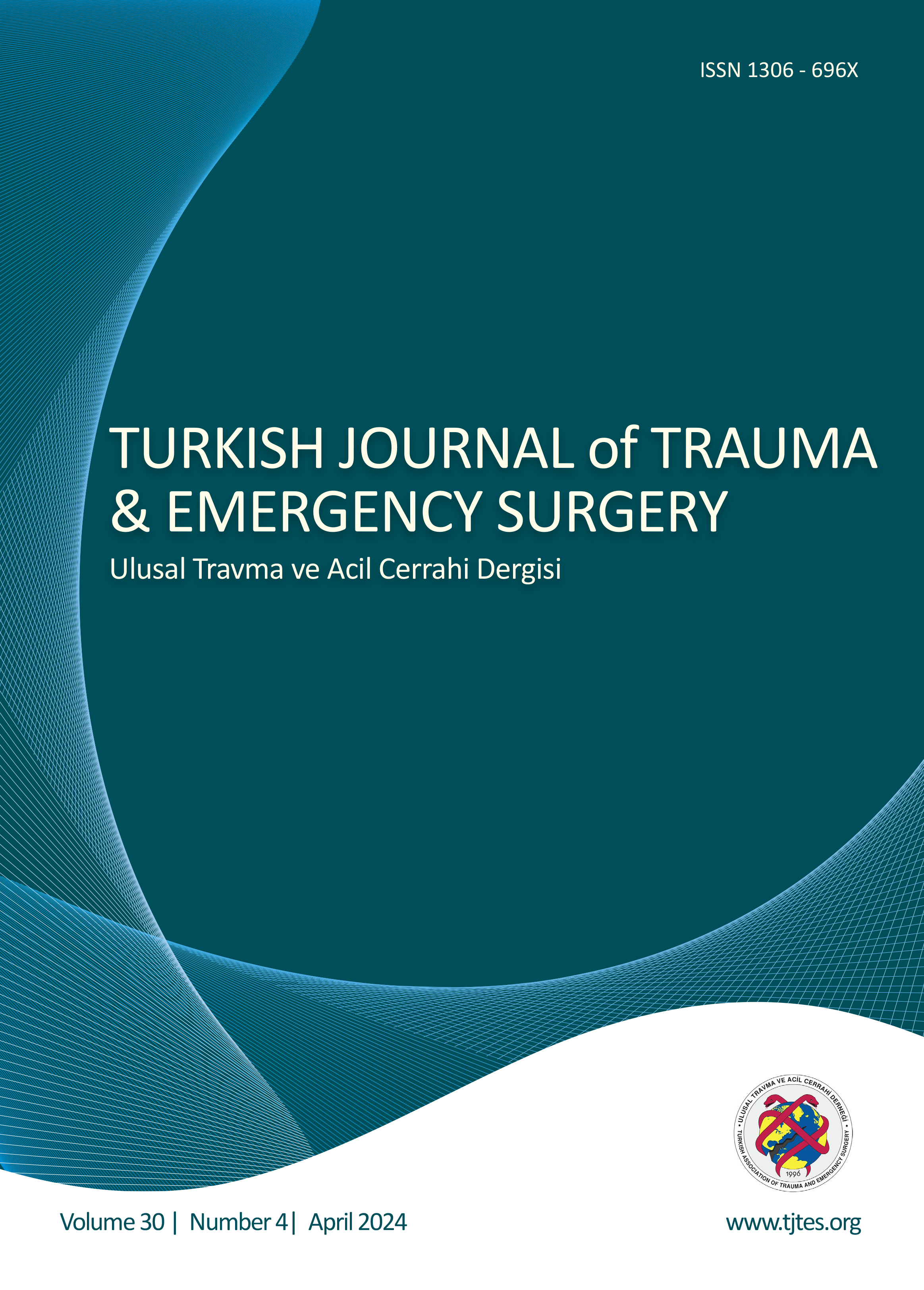Hızlı Arama
Künt Göğüs Travması Sonrası Gelişen Akut Miyokard Enfarktüsünün Tedavisi
Oner Ozdogan1, Mustafa Karacelik2, Cenk Ekmekci1, Cengiz Ozbek21Izmir Tepecik Egitim ve Arastırma Hastanesi, Kardiyoloji Klinigi2Izmir Tepecik Egitim ve Arastırma Hastanesi, Kalp ve Damar Cerrahisi Klinigi
Künt göğüs travması sonrası koroner arter diseksiyonu nadir bir komplikasyondur. Hastalar genellikle ani ölüm ile gelirler ve tanı çoğu zaman atlanmaktadır. Bu yazıda künt göğüs travması sonrası hiperakut önyüz miyokard enfarktüsü gelişen 46 yasinda bir olguyu sunuyoruz. Tanısal koroner anjiyografi ana koroner arter çıkışından başlayan sol ön inen arterin (LAD) total oklüzyonunu göstermekteydi. Koroner anjiyografi sonrası hızlıca proksimal LADye çıplak stent yerleştirildi ve TIMI 3 akım elde edildi; fakat işlem sonrası görüntüler tatminkâr sonuçlar göstermedi. Proksimal bir diseksiyon ve sol ana koronere yayılan intraluminal trombüs gözlendi. Lezyonun sol ana koroner artere yakınlığından dolayı tekrar girişim riskli bulundu ve acil koroner arter bypass greftleme (CABG) planlandı. Koroner arter stentleme, künt göğüs travması sonrası gelişen koroner tıkanıklıkta tavsiye edilen tedavi yöntemidir. Fakat lezyonun anatomik özelliklerine bağlı olarak perkütan koroner girişim bazen riskli olarak Kabul edilmektedir. Künt göğüs travması sonrası miyokard enfarktüsü durumunda erken reperfüzyonun sağlanmasında zamanlama önemlidir ve CABG özellikle damarın total oklüzyonuna yol açan trombüs oluşumu ile birlikte olan proksimal LAD diseksiyonlarında başlangıç reperfüzyon tedavisi için tercih edilen yöntem olmalıdır.
Anahtar Kelimeler: koroner arter diseksiyonu, göğüs travması, perkutan koroner girişimManagement of Acute Myocardial Infarction after a Blunt Chest Trauma
Oner Ozdogan1, Mustafa Karacelik2, Cenk Ekmekci1, Cengiz Ozbek21Izmir Tepecik Training And Research Hospital, Department Of Cardiology2Izmir Tepecik Training And Research Hospital, Department Of Cardiovascular Surgery
Coronary artery dissection is a rare complication after blunt chest trauma. Patients usually present with sudden death and the diagnosis is frequently missed. In this report, we present a case of a 46-year-old with a hyperacute anterior wall myocardial infarction after a blunt chest trauma. Diagnostic coronary angiography showed total occlusion of left anterior descending coronary artery (LAD) starting at the takeoff of the vessel from the left main coronary artery (LMCA). A bare-metal stent was immediately deployed at the proximal LAD and TIMI 3 flow was achieved; however post-procedural images revealed no satisfactory results. A proximal dissection and intraluminal thrombus extending to LMCA was observed. Because of the proximity of the lesion to the LMCA, re-intervention was considered to be risky and urgent coronary artery bypass grafting (CABG) was planned.
Coronary artery stenting is the advised treatment modality for coronary occlusion after blunt chest trauma However, post-traumatic percutaneous coronary intervention was sometimes considered to be risky because of the anatomic features of the lesion. Timing is cardinal in achieving early reperfusion in the course of myocardial infarction after blunt chest trauma and CABG should be the preferred procedure for initial reperfusion treatment especially in proximal LAD dissections with subsequent thrombus formation leading to total occlusion of the artery.
Makale Dili: İngilizce




